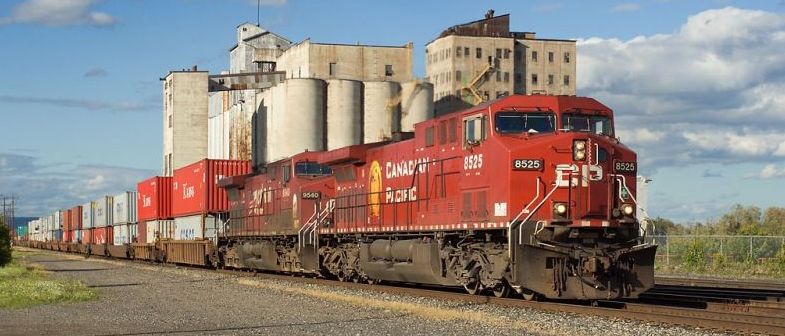
Train Addiction Help Line: 1.866.840.7777
Aug 22, 2008 - HO Scale
Frequently Asked Questions re the New Saskatchewan Grain Cars - Part One

Dear HO Scale Modelers:
We have been fielding a number of questions from customers re the brand new Hawker Siddeley 4550 cubic-foot 4 bay cylindrical covered hoppers coming from North American Railcar Corporation.
We will be receiving our first test shots of the HO version of the car in about 10 days, and engineering (full assembled test version) about 2 weeks after that.
So here is the first of number of articles by a member of our staff, Darrell Sawyer on the new car:
Frequently Asked Questions
Here is a list of questions (followed by answers) that we are being asked regarding the upcoming North American Railcar Corporation release of the Hawker Siddeley 4550 cubic-foot 4-bay cylindrical covered hopper. Following the question and answer section is an illustrated glossary of common freight car terms that will aid in spotting and identifying differences between the various versions of the Hawker Siddeley 4550 (HST 4550) and similar cars.
Q: Who built the Saskatchewan Grain Car Corporation cylindrical covered hoppers?
A: The Saskatchewan Grain Car Corporation (SGCC) purchased their entire roster of four series of cars (a total of 1000 cars), all built in 1981, from Hawker Siddeley. The first series, SKPX 625000-625272 was built in February and March and the second series, SKNX 397250-397476 was built in March and April, at the Trenton, Nova Scotia plant. The third series, SKNX 397000-397249, built during April and July and the fourth, SKPX 625273-625522 were built between August and October at the Thunder Bay, Ontario plant.

Q: Someone has already produced a Saskatchewan Grain Car model. Why produce another?
A: The existing model that has been decorated with SGCC’s original livery is actually a representation of National Steel Car’s version of the 4-bay cylindrical covered hopper. As noted in the answer to the previous question, SGCC’s entire purchase of cars was from Hawker Siddeley (HST). Pacific Western Rail Systems (PWRS), the parent company of North American Railcar, was offered an exclusive arrangement with the SGCC that we felt we couldn’t pass up. If we produced an accurate model of the HST car, we would have exclusive rights to the current paint scheme, as well as any new schemes. This gave us the opportunity and incentive to produce a very accurate, highly detailed model of the HST version of the “Canadian” 4-bay covered hopper.
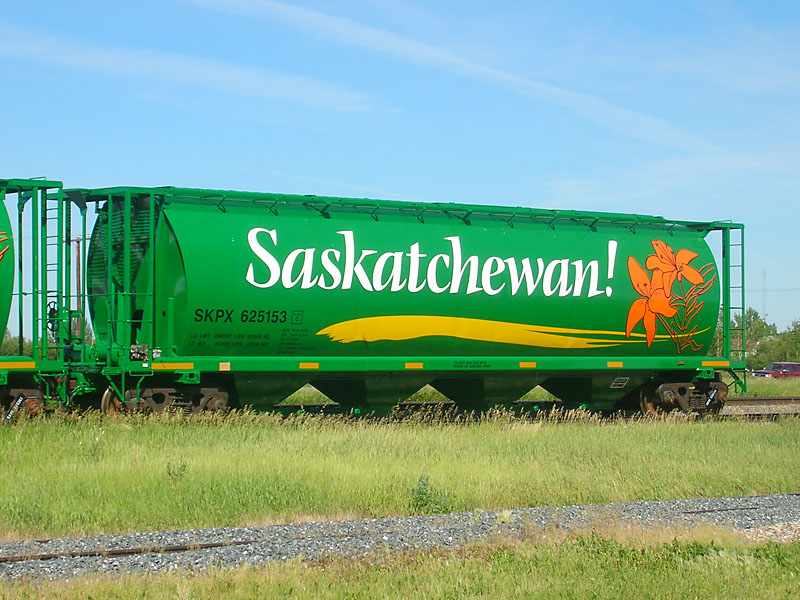
Q: Then what are the differences between the Hawker Siddeley and the National Steel Car versions?
A: At first glance, the offerings by Hawker Siddeley, National Steel Car and the third manufacturer, Marine Industries all look to be the same design. Actually, the design was developed by a team of engineers from both Canadian Pacific and Canadian National, to create a standardized design for hauling grain and dry chemicals in Canada. The basic design was offered to the 3 car builders who each were responsible for determining how to actually build the cars within the design parameters. Each builder came up with unique solutions for manufacturing the cars in their respective facilities. The two major spotting differences between the NSC and HST cars are the number of side panels and the number of running board supports. The National Steel Car (the original version modeled by Intermountain) has 10 welded side panels while the Hawker Siddeley car has 9.
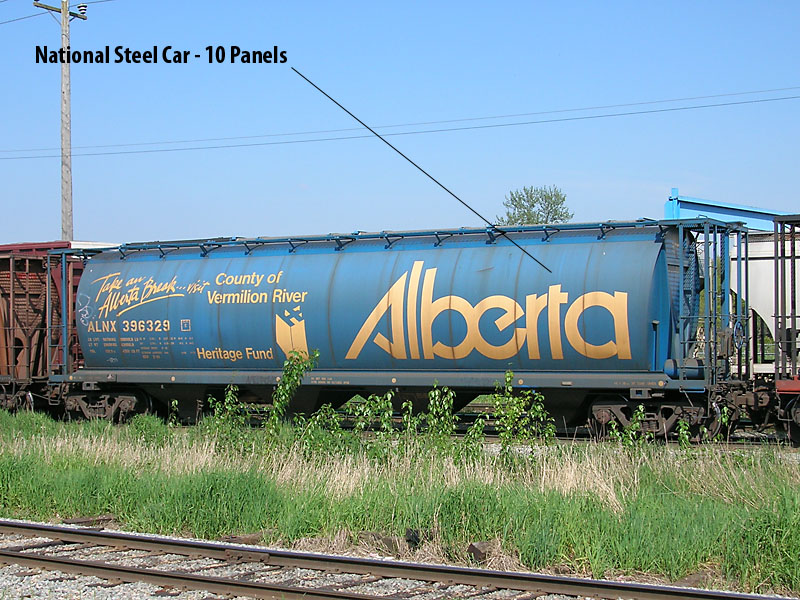
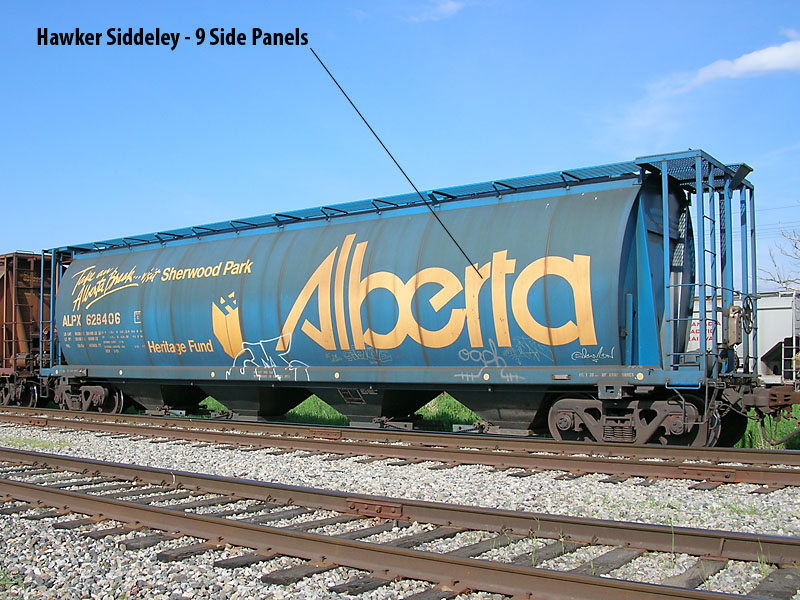
The NSC car has 16 running board supports, while the HST car has 11. NSC used a pair of supports at the seams of the running board panels, while HST opted to use a support at the joints that is twice as wide as the interim supports.
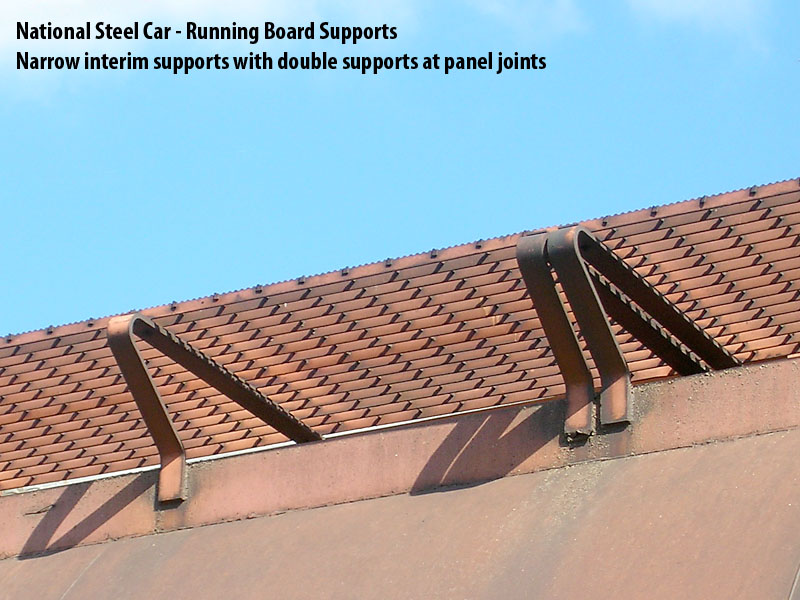
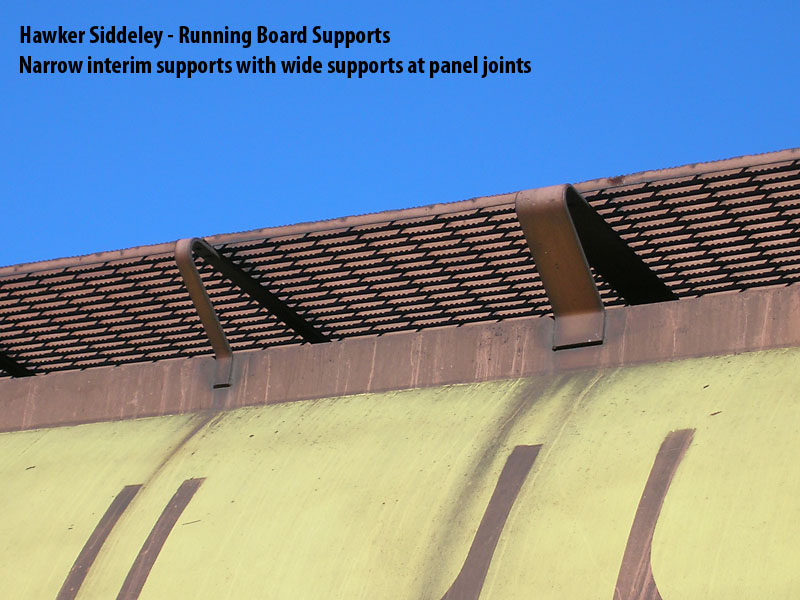
Minor spotting differences between the two cars are the ends, the orientation and location of the brake reservoirs and valves and the side sill.
The NSC ends have a pair of tall vertical braces that are mounted in a “V” shape. On either outboard side of the “V” braces are “L” shaped braces that are open to the outside (one leg is welded to the end sheet) and a flat square “cap” is welded to the upper end. Up at the top of the end, between the “V” braces and offset to the right, is a length of “C” channel that covers a vent.
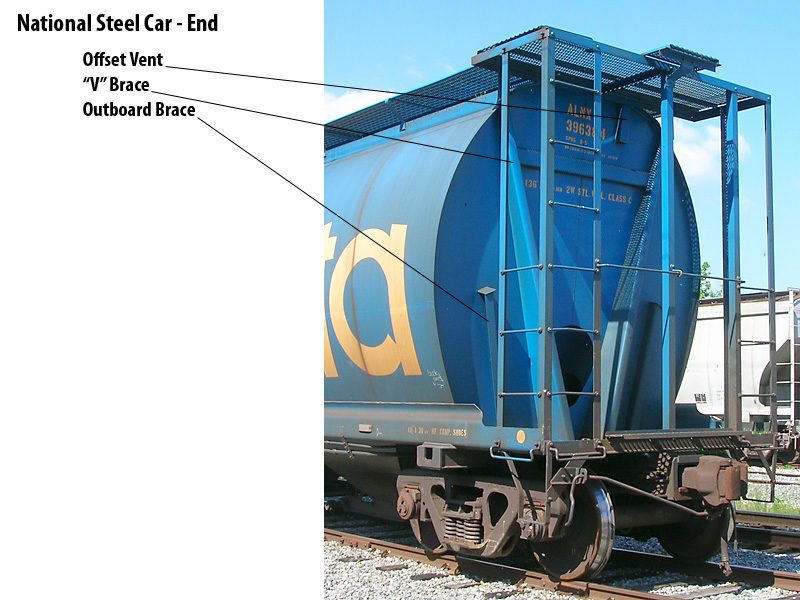
The HST ends have the same “V” brace, but the outboard shorter braces are the same “L” shape, but they are mounted with both legs attached to the slope sheet. A triangular cap is welded to the top of the braces. The vent cover, rather than being offset, is centered and shorter in length.
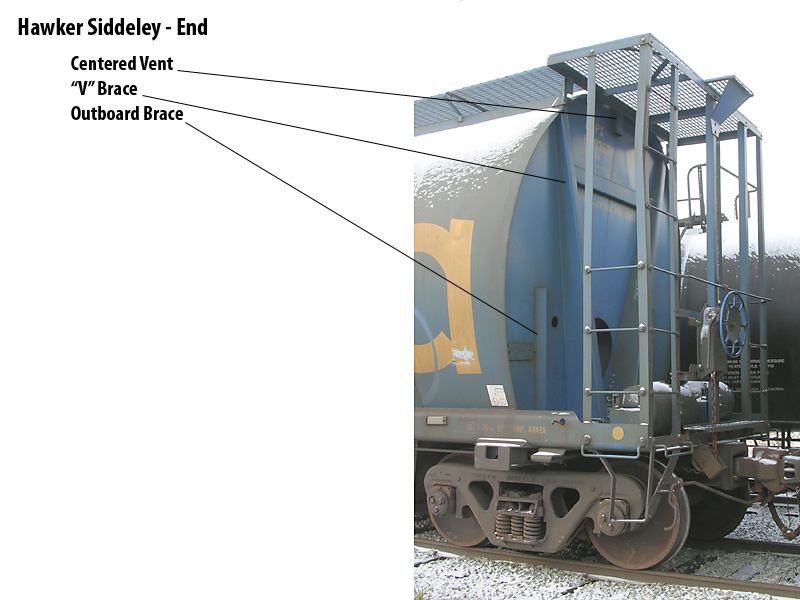
On the NSC cars, there is a pair of air reservoirs on the B-end. The larger combined auxiliary and emergency reservoir is located to the left (when facing the B-end), parallel to the side sill. To the right of the combined reservoir is a smaller supply reservoir, which sits with its back end nestled between the vertical “V” braces. To the right of the supply reservoir, next to the right side sill (when facing the B-end) is the control valve (often referred to in the hobby as a “triple valve”).
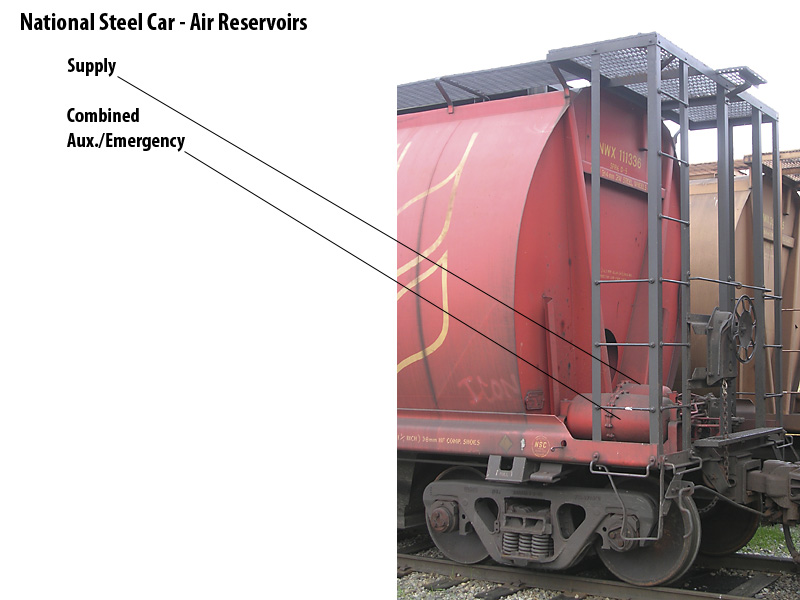
The HST cars, while utilizing the same components, have them arranged differently. The reservoirs are mounted parallel to the end of the car, close to the edge, immediately behind the end frames. The combined auxiliary/emergency reservoir is to the left, near the left side sill (when facing the B-end) and to the right of that is the supply reservoir. To the right of the supply reservoir is the control valve, located near the right side sill (when facing the B-end).
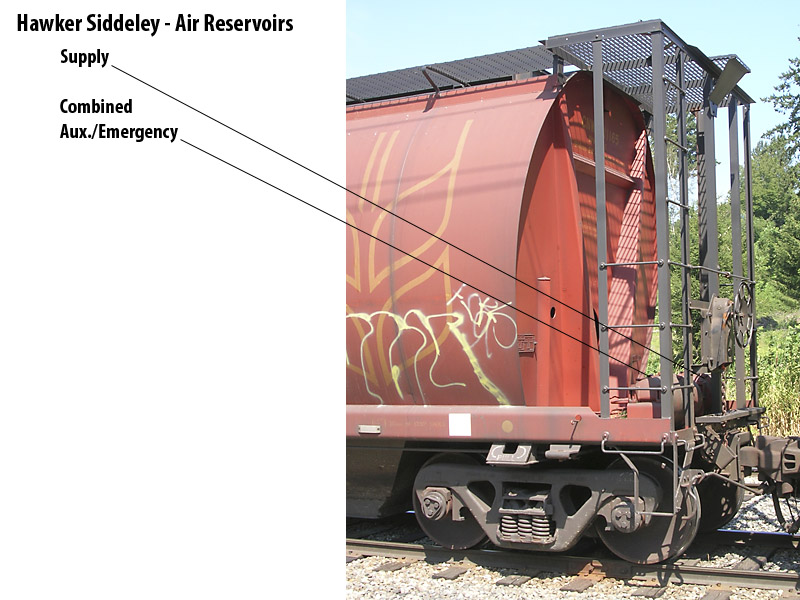
The side sills on the NSC cars have a sort of “S” profile, when viewed from the end. The upper edge rolls out and cradles the car body. A notch is cut out of the upper edge of the sill at the side ladders so that the stiles can be butted against the inside vertical surface of the sill. The NSC notch is roughly 6” longer than the width of the ladders.
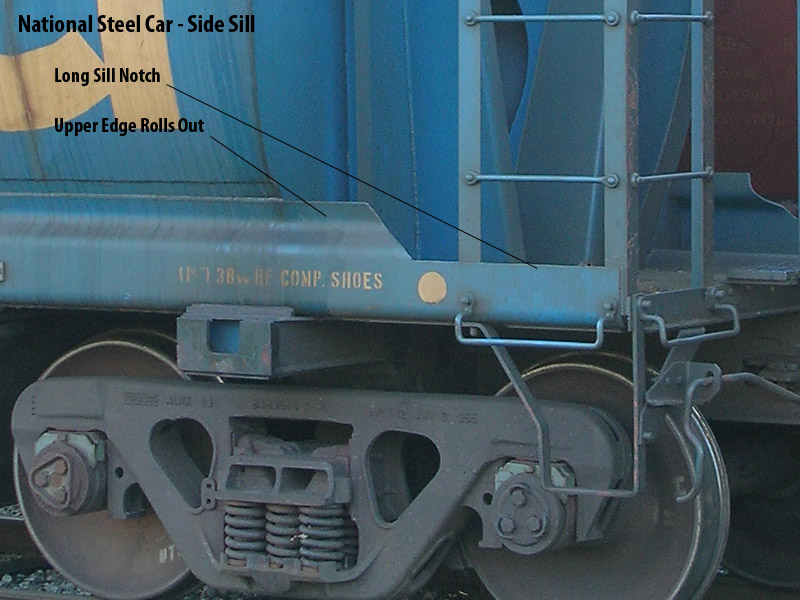
The side sills on the HST cars are similar in design, but eliminate the upper rolled portion and instead roll in to cradle the car body. The notch at the ladders is shorter, only slightly longer than the ladders are wide.
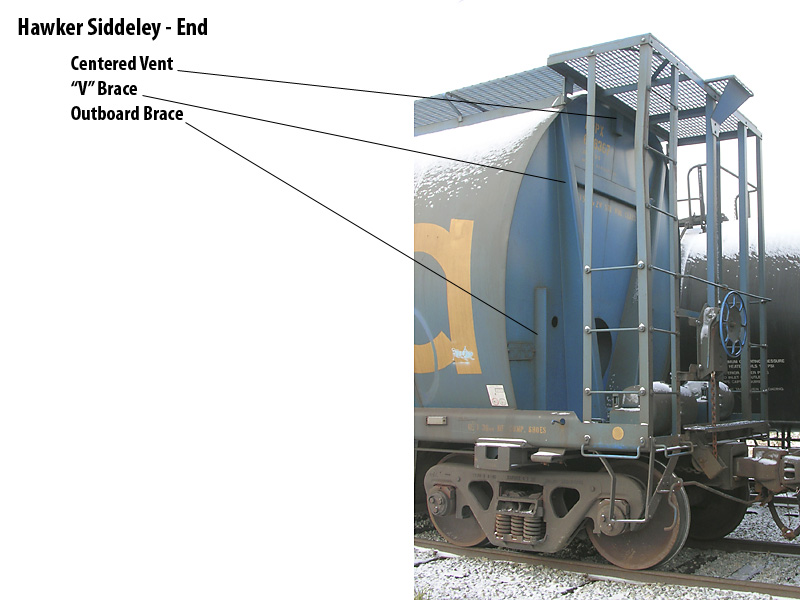
This only covers the differences between the version of the NSC car that Intermountain released and the version of the HST car that was purchased by SGCC. Both manufacturers modified their designs over time and also built versions with round hatches instead of trough hatches.
A quick note to all modelers: we will be adding addional FAQ's and information re the new Hawker-Sideley Cylindrical Hoppers as it is received. So stay tuned to the "Media Pages" here.
For those of you who are interested in ordering the HO version of the cars please ....click here to order
Thanks for your interesrt,
Pacific Western Rail